SeniorGuard
Reliable protection for patients with mental illness
In nursing homes, taking care of disoriented residents with dementia poses a great challenge. The nursing goal is, on the one hand, to maintain and enhance the quality of life for as long as possible. On the other hand, due to the progressive and non-treatable symptoms of the disease, it is necessary to protect the affected people from danger through the targeted use of assistive technology.
The walk-away protection system SeniorGuard® was developed and optimised precisely for this purpose. It does not create physical barriers, but defines monitored movement zones in which free movement is possible for people with dementia. Leaving predefined protection zones leads to the immediate triggering of an alarm, which informs the responsible nursing staff in the form of an assistance call.
In addition, the SeniorGuard® system enables patients and caregivers to make mobile emergency calls to summon help as quickly as possible in dangerous situations.
- Runaway protection for dementia patients
- Relief of the organizational workflow in care facilities
- Monitored protection zones for reliable alerting of nursing personnel
- Localization of the whereabouts
Locator
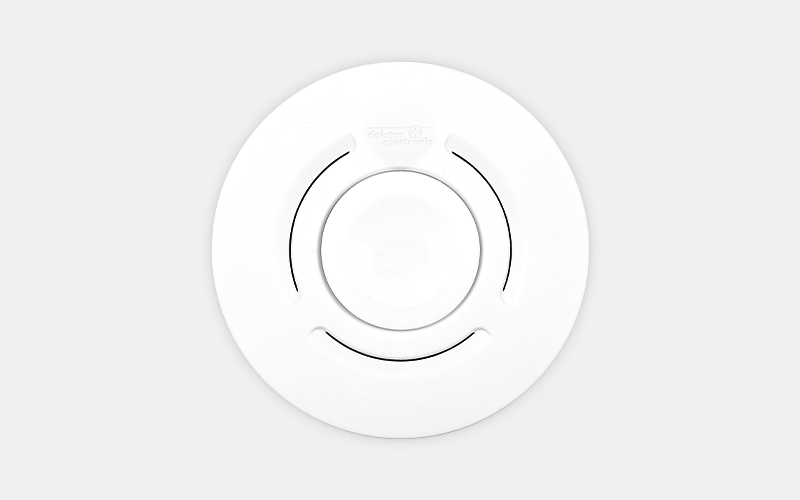
LCA 500
The Locator LCA 500 is installed in the center of the zone to be monitored. This can be individual rooms or doorways. It transmits a permanent alarm signal in the LF frequency range at 125 kHz with an adjustable range of approx. 1 – 5 m. Each alarm field is identified by a unique location code for communication with the amanTag® transponders located in the reading range of the locator. A UHF transceiver is integrated in the locator for bidirectional communication with the amanTag® transponders. The LCA 500 locator can be operated standalone or online.
- Comprehensive range of functions for effective baby protection
- Simultaneous identification of up to 10 persons
- Standalone and online operation
- Compact design
- Optional system configuration for alarm field extension and direction detection
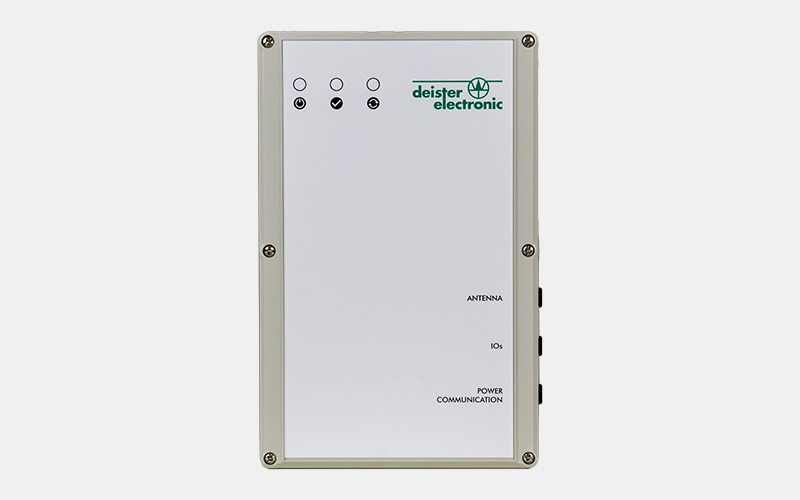
LCA 500 ELA
Compared to the LCA 500, which is equipped with an integrated loop antenna for generating the alarm field at 125 kHz, the LCA 500 ELA has been designed for use with specified loop antennas, which are available in different design variants on site as door frame antennas, wall antennas or, in outdoor areas, as floor antennas. Antennas of this design allow a very precise definition and thus application-specific expansion of the wake-up field. The matching electronics integrated in the locator allow the connection of external loop antennas with a wide range of values of assigned inductances.
- Integration into and retrofitting of existing installations
- Concealed installation of the Locator possible, e.g. in false ceiling
- Simple connection of loop antennas installed on site in the door, wall or floor area
Access control
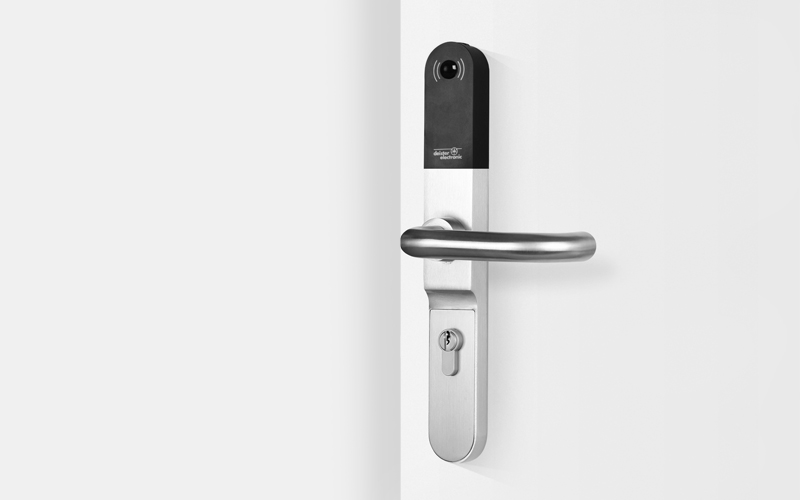
Digital Handle
Intuitive access control for living spaces and living areas
Electronic door opening systems represent a widespread technical solution for gaining access to secured areas or private rooms by carrying credentials, e.g. in the form of transponders or chip cards. The Digital Handle was designed especially for use in care facilities with regard to residents with physical and mental disabilities.
The electronic door fitting enables a door to be opened without explicit presentation of the necessary credential. Carrying an active transponder, which can be worn on the wrist for example, is sufficient to allow authorised persons access to protected areas and residential rooms. The door fitting is equipped with a motion detector that activates the integrated amanTag® reader when a person approaches. The reader evaluates the information of an amanTag® transponder so that a person with the appropriate authorisation is granted access.
- Barrier-free access to residential rooms
- Intuitive handling due to hands-free concept
- Can be used with active amanTag® transponders as well as passive cards or transponders
- Compatible with airlLink wireless technology
- More security for residents and staff

airLink module
The ALS 20 airLink® module is designed to network the door release elements distributed in the building via radio. It can be operated in a frequency band with 100% duty cycle, a high data rate and low transmission power as well as in a band with only 1% duty cycle, a low data rate but high transmission power and thus a large range. The main application areas of the ALS 20 are the registration of all online bookings of the digital cylinders and fittings present in the reception area. In addition, the radio technology enables wireless synchronization of all clocks in the system network, management of blacklist entries and transmission of battery status messages to the central management software Commander Connect.
- Wireless networking for electronic door opening systems
- Secure communication through AES data encryption
- Modular expansion of network coverage
Transponder
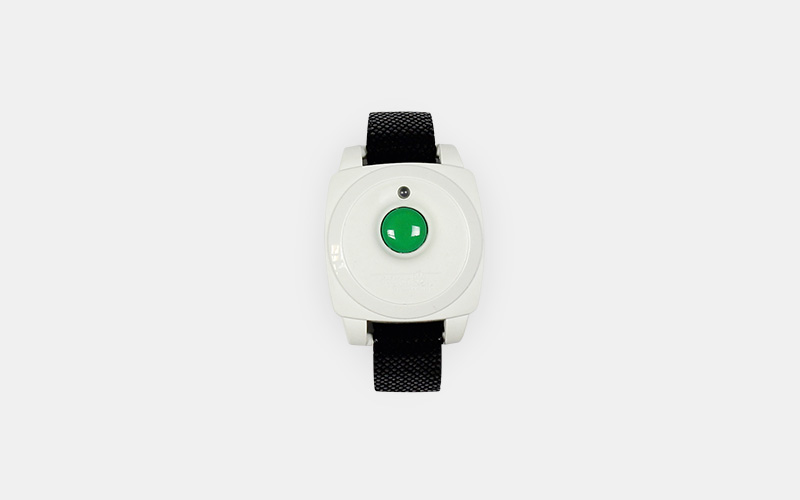
UTA 1
Patient and nursing transponder
The UTA 1 can be used as an alternative to the UTA 3 as a patient transponder and can also be worn by staff on nursing stations. The additional push-button is used to trigger an assistance call incl. an area identifier while on the move, which is received within a radius of 25 m to generate an emergency call for immediate information of the nursing or security staff. The LED integrated in the UTA 1 is used to display a status message after pressing the push-button.
- Mobile emergency call to nursing and security personnel
- Feedback on successful transmission of the emergency call via integrated LED
- In-house location determination

UTA 2
Patient transponder
The UTA 2 transponder is particularly used for patients with dementia. If a patient with a tendency to wander enters an area monitored by the locator’s transmission field, an alarm will be immediately triggered to inform the nursing staff promptly. The system can be configured to prevent alarms from being triggered when a patient, accompanied by nursing personnel, enters specific monitoring areas, such as on the way to therapy. The transponder is equipped with a sticker resembling a wristwatch, designed to create the impression of an inconspicuous and familiar object, especially for patients with dementia.
- Effective protection for patients with dementia
- Unobtrusive wristwatch design with clock face
- In-house location tracking
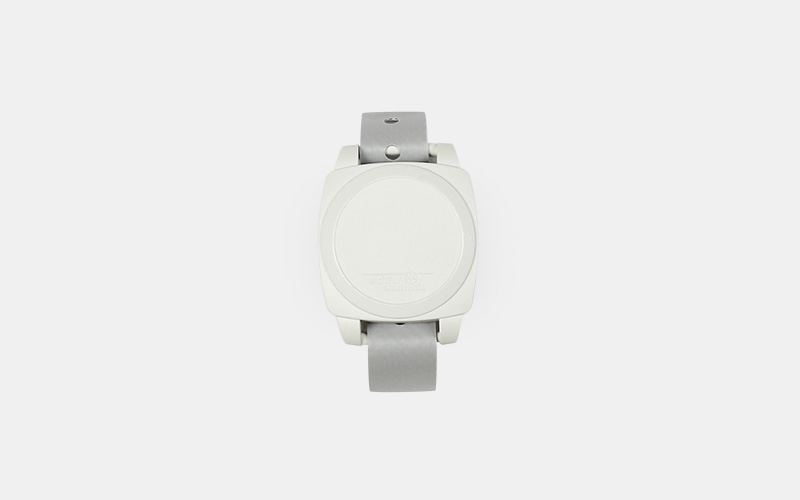
UTA 3
Patient transponder
The UTA 3 transponder is used as a patient tag, but it can also be used as an alternative to the UTA 2 transponder for individuals with dementia. If a patient with a tendency to wander enters an unauthorized area monitored by a locator, an alarm will be triggered, allowing the nursing staff to respond promptly. It is also possible to configure the system so that no alarm is triggered when an authorized companion is present. The wristband transponder features a discreet design and offers a high level of comfort when worn.
- Effective safeguarding for patients with dementia
- Subtle and inconspicuous design
- In-house location tracking
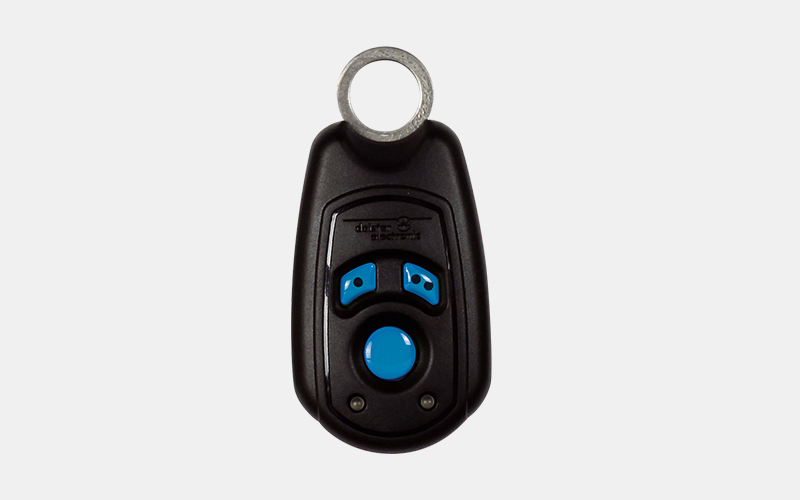
ITA 3
Installer Transponder
The ITA 3 is a special transponder that can be used by employees in the fields of facility management, service, and maintenance to adjust the range of a locator’s wake-up zone on-site, without the need for additional software. For this purpose, the transponder is equipped with three buttons. The large call button can initiate a test call, while the small buttons can enlarge or reduce the wake-up zone of the locator. An integrated LED indicates that the transponder is within the wake-up zone. This allows for optimal adjustment and periodic verification of the expansion of a protection zone using this transponder.
- Intuitive adjustment and control of wake-up zone expansion for defining a protection zone
- On-site configuration of the locator by service technicians without additional software
- Integrated LED for monitoring the expansion of the locator’s wake-up zone
Accessories

Door sensor
Every door with a locking element also needs a door sensor. This is installed in such a way that it can precisely detect the respective status of the door, i.e. open or closed. The door sensor is connected to the respective locking element, which communicates with the vanLoxx system.